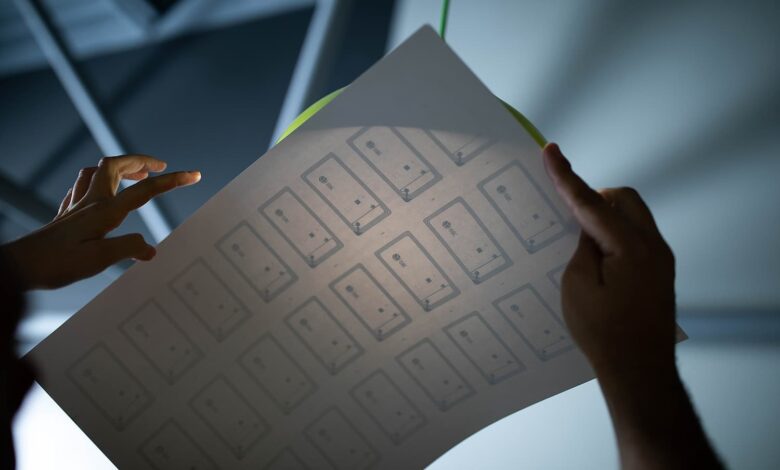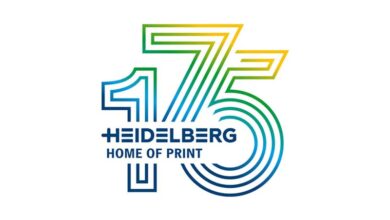Sappi and ISBC Launch Smart Paper Embedded with RFID

Smart paper with embedded RFID tags opens up new business opportunities
Printed electronics are decidedly on the move. Radio-frequency identification (RFID) is no longer a niche technology. It is already being used to great effect in many areas of everyday life: in our passports, ID cards and travel cards, clothes, library books, and much more. The vast scale and intricacy of the RFID market also offers new opportunities for the printing industry. With this in mind, ISBC has developed and presented on the market an innovative product: ISBC® RFID Paper. The product is sheet-fed and made with 100% fibre-based Swiss Matt paper substrate from specialty paper manufacturer Sappi. RFID chips are embedded into the paper sheets causing no effect over the paper surface – it remains flat and smooth.
Sappi is a provider of sustainable wood fibre products and solutions. With its proven expertise in speciality papers, Sappi came up on the ISBC radar. The smart RFID Paper supplier was looking for an alternative to plastic for smart printing and Sappi’s Swiss Matt paper – used mostly as an inkjet paper for large-format printing – was the perfect choice due to its white surface, excellent print results, and outstanding scratch- and water-resistance. Furthermore, thanks to its exceptional surface quality and silky feel, the paper proved to be the perfect material, offering a first-class experience to consumers. “It was clear from the very beginning that we would greatly benefit from developing our customer projects in direct collaboration with Sappi. The speciality paper expert’s strong expertise has enabled us to take a big step forward,” says Nikita Kozhemyakin, Business Development Director of the ISBC Group.

Thinking out of the box with ISBC RFID Paper
With growing demand and potential applications, the printing market is facing the challenge of enhancing existing products and services in line with new technical possibilities. With the ground-breaking ISBC® RFID Paper, printing companies can now extend their portfolio to include printed electronics. ISBC® RFID Paper incorporates an RFID chip and is as easy to print as a regular sheet of paper, making it a cost-efficient solution for printing companies. Another advantage of the ‘sandwich product’ is that it can be printed with various kinds of printing techniques and machines – therefore eliminating costly in-house development work and avoiding investments in new equipment, software and business processes. The desired information can simply be transferred to the paper-embedded RFID chip: for the encoding process ISBC has developed a special encoding machine and training materials. ISBC® RFID Paper line made from Swiss Matt is used mainly for business cards, postcards, stickers, promotional flyers, POS materials, access & loyalty cards, brand protection labels, diplomas among many other applications.
Why paper makes a difference
In terms of resource conservation and environmental protection, RFID Paper delivers significant advantages over conventional plastic tags. Ivan Demidov, ISBC Founder and inventor says: “Our patented technology is unique on the market. It offers end-users a PVC-free, more sustainable and future-proof option.” Paper-based RFID tags reduce waste both during production and at the end of the product’s lifecycle. Printing processes also consume less energy and resources, which leads to a reduced carbon footprint for forward-looking, sustainability-conscious B2B and B2C companies.
How is the world shaping up today in terms of RFID, which could play a major role for the paper industry? ISBC® RFID Paper is suitable for a wide range of applications in numerous industries. It adds digital value to simple products – reliably and at low cost. Specifically, it can be used for contactless tickets on buses, trains, trams and other means of transportation, as well as for prepaid cards and gift cards, business cards and access control, including key cards for hotel rooms, ski passes or admission wristbands for events and trade fairs. The paper-based sensors and labels can also be integrated into diplomas and other certificates to verify document authenticity. Conventional postcards can also be enhanced by integrating an RFID tag with interactive URLs.
About the ISBC Group
ISBC is an international company with its HQ in Singapore, 19 years of experience in production of RFID-based products. The company’s products are already used by more than 50M people worldwide. ISBC continuously invests in the development of unique RFID & IoT products. Partnering with market leaders such as NXP, HP, Sappi and Dupont, ISBC develops products across different industries such as financial payment, security, transportation, brand protection, logistics and supply chain. The unique smart RFID Paper is produced on one of ISBC’s production plants in microelectronics valley of Moscow, Russia. Learn more about ISBC® RFID Paper at www.rfid-paper.com.

.gif)




103 Comments